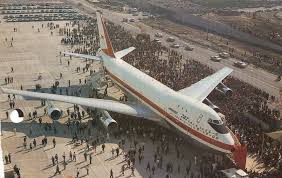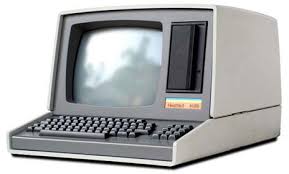Aircraft Location: Smithsonian Institution, National Air and Space Museum, Milestones of Flight Gallery
---------------------------------------------------------------
1957

Milestone: SPUTNIK First Artificial Satellite | | Date of Milestone: October 4, 1957 | | Spacecraft: Sputnik 1 | | Mission Operated by: USSR | | Spacecraft Location: Smithsonian Institution, National Air and Space Museum, Milestones of Flight Gallery |
---------------------------------------------------------------
1958

Milestone: First Successful United States Satellite | | Date of Milestone: 1958 | | Spacecraft: Explorer 1 | | Operated by: NASA Jet Propulsion Laboratory | Spacecraft Location: Smithsonian Institution, National Air and Space Museum, Milestones of Flight Gallery
-------------------------------------------------------------
1959

Milestone: First winged aircraft to achieve Mach 4, 5, & 6 and to operate at altitudes above 30,500 meters (100,000 feet) | | Date of Milestone: Test flights in 1959 | | Aircraft: North American X-15 | | Operated By: NASA | Aircraft Location: Smithsonian Institution, National Air and Space Museum, Milestones of Flight Gallery
--------------------------------------------------------------- 1962

Milestone: First American to orbit the Earth. | Date of Milestone:
February 20, 1962 | Spacecraft:
Mercury "Friendship 7" | Astronaut:
John H. Glenn Jr. | Spacecraft Location:
Smithsonian Institution, National Air and Space Museum, Milestones of Flight gallery |
-----------------------------------------
1962

| Milestone: First Manned Lunar Landing Mission | | Date of Milestone: July 16-24, 1969 | | Spacecraft: Apollo 11 Command Module "Columbia" | | Astronauts: Neil Armstrong, Edwin "Buzz" Aldrin, and Michael Collins | Aircraft Location:
Smithsonian Institution, National Air and Space Museum, Milestones of Flight Gallery
---------------------------------------------------------------
1962

Milestone:
First Spacecraft to Study Another Planet | Date of Milestone:
December 14, 1962 | Spacecraft:
Mariner 2 | Mission Operated by:
NASA Jet Propulsion Laboratory | Spacecraft Location:
Smithsonian Institution, National Air and Space Museum, Milestones of Flight Gallery |
--------------------------------------------------------------- 1969

| | Aircraft: Boeing 747 | Mission Operated by: Boeing Aircraft Company USA
|
|

| Milestone: Largest ever aircraft to fly with largest ever number of passengers (360) | The first Boeing 747-100 was flown for the first time at 11:34 AM on February 9, 1969. The subsequent problems had their roots in the early days for the construction of the Boeing 747's. In the early 1970's, aircraft construction was extremely difficult as there were no super computers.
| Boeing was under pressure to cut costs. They found that Russians (the then USSR) were most cost-effective and decided to buy few vital parts from Russia. The Russians could produce the required aluminum to the exacting specifications of the Boeing engineers and did so for the first fifteen B-474s. Then Russians suddenly realised that it was not profitable to make aluminum to the Boeing specifications and produced inferior product and sent it to USA as if meeting all the requirements. It was not until Boeing had made 686 of Boing-747 planes including the 747-200's and some 747-300's, that it realized what had been going on. Boeing knew there was a problem and designed the necessary modification to remedy the situation. Boeing was a major source of export revenues for the USA and the planes were in big demand as they were a great commercial successful. The problem was discovered in the early eighties when there were over a thousand planes flying passengers and freight all over the world. In fact, to shut down over six hundred planes would be a disaster for world commerce apart from the loss of prestige, national pride, and competition from the Europeans who were developing the now equally competitor Airbus. So the matter was not elevated and allowed the aircraft to age themselves. It is heartening to note that the specifications for 747 were designed with so much of tolerance that nothing adverse happened to the 747s of 1970s. |
|
|
|
|
|
|
1972

Milestone: One of a collection of rocks returned from the Apollo manned missions to the Moon. We too touched the Moon Rock. | | Date of Milestone: 1972 | | Artifact: Lunar Basalt returned by Apollo 17 Astronauts | | Artifact Location: Smithsonian Institution, National Air and Space Museum, Milestones of Flight Gallery
---------------------------------------------------------------
1976 |

Milestone: | First Spacecraft (Viking Lander) to Operate on the Surface of Mars |
|
|
|
|
| | Date of Milestone: July 20, 1976 | | Spacecraft: Viking Lander | | Operated By: Jet Propulsion Laboratory | Spacecraft Location:
Smithsonian Institution, National Air and Space Museum, Milestones of Flight Gallery
---------------------------------------------------------------
1999

| Milestone: First Nonstop Flight Around The World by Balloon | | Date of Milestone: March 21, 1999 | | Vehicle: Breitling Orbiter 3 Gondola | | | Artifact Location: Smithsonian Institution, National Air and Space Museum, Milestones of Flight Gallery |
On March 1, 1999, Bertrand Piccard and Brian Jones lifted off from the Swiss alpine village of Chateau d’Oex in the Breitling Orbiter 3 balloon. On March 21, 1999. 19 Days, 21 hours and 55 minutes later, they landed in the Egyptian desert after traveling 45,755 kilometers (28,431 miles) and completing the first non-stop flight around the world in a balloon. Pressurisation: Cabin pressure dropped as the balloon climbed. At 10,000 meters (33,000 feet), the cabin pressure was raised to atmospheric pressure at 3,000 meters (10,000 feet). Temperature: Burners maintained the cabin temperature at 15 °C.
Solar panels: Solar panels beneath the gondola recharged the on- board lead batteries that provided electrical power.
Instrumentation: The forward cockpit contains the controls and instruments needed to monitor and operate the aircraft and systems. The crew used satellite-based systems to communicate and navigate. Gondola: | Weight, empty: | 2,000 kg (4,400 lb) | | Fuel: | Propane | | Manufacturer: | Cameron Balloons, Bristol, England, 1998 |
--------------------------------------------------------------- 2004

| Milestone: First privately developed, piloted vehicle to reach space. | | Date of Milestone: June 21, 2004 | | Passenger Spacecraft: SpaceShip One | Artifact Location:Smithsonian Institution, National Air and Space Museum, National Mall building, Milestones of Flight Gallery
Launched from its White Knight mother-ship, the rocket-powered SpaceShipOne and its pilot ascended just beyond the atmosphere, arced through space (but not into orbit), then glided safely back to Earth. The flight lasted 24 minutes, with 3 minutes of weightlessness. With SpaceShipOne, private enterprise crossed the threshold into human spaceflight, previously the domain of government programs. The SpaceShipOne team aimed for a simple, robust, and reliable vehicle design that could make affordable space travel and tourism possible. Records • 100 KM (62 miles) altitude, Pilot: Mike Melvill Date of first flight : June 21,2004. |
|
|
|
|
|
|
• 102 kilometers (64 miles) altitude; by Capt.Mike Melvill, September 29, 2004. • 112 kilometers (70 miles) altitude by Capt, Brian Binnie on 4th October 2004 Unique Design Features • Three-person vehicle for suborbital spaceflight. • Lightweight composite structure with twin swept wing-tail booms. • Hybrid ascent rocket, burning both solid and liquid propellants • Wings that pivot up (feather) for stable, safe reentry. • Pilots Mike Melvill and Brian Binnie , Scaled Composites, became the first pilots to earn FAA commercial astronaut wings. SpaceShipOne, N328KF | |  | SpaceShipOne is carried aloft to 15 kilometers (50,000 feet) by its mothership, White Knight.
| | |  | Released from White Knight, SpaceShipOne gets a rocket-powered boost into space. | | |  | Candies float inside the cockpit during the time in space.
| | |  | In space, the pilot raises, or feathers, the wings as shown here, for the coasting suborbital arc and initial descent. This brakes the spacecraft for reentry into the atmosphere and getting out of control.
| | |  | SpaceShipOne suborbital flight profile. | | |  | SpaceShipOne pilots Mike Melvill (right) and Brian Binnie.
| | |  | Investor Paul G. Allen and designer Burt Rutan with SpaceShipOne. | | |  | Earth from SpaceShipOne. Photo by pilot Brian Binnie. Courtesy of Discovery Channel and Vulcan Productions Inc. |
|
Please leave comments if you found it informative.
V S Saxena
|
|
|
|
|
|























Congrats for such an elaborate work of compilation. Interesting. Thanks.
ReplyDeleteI am happy you liked this. Your encouragement is valuable for me.
DeleteThank you Harish Bhai!
ReplyDeleteDeserves applause wonderful informative compilation
ReplyDeleteAnju
Thank you Anju! Encouragement from friends and well-wishers like you keeps me going and pepped up.
ReplyDeleteAircraft Pic. No.1 to 11 at Smithsonian Museum were taken by me using Canon Power Shot SD1300 digital camera, a birthday gift from my son and daughter-in-law. Our visit was also their gift on my birthday (6th June 2010).
ReplyDelete